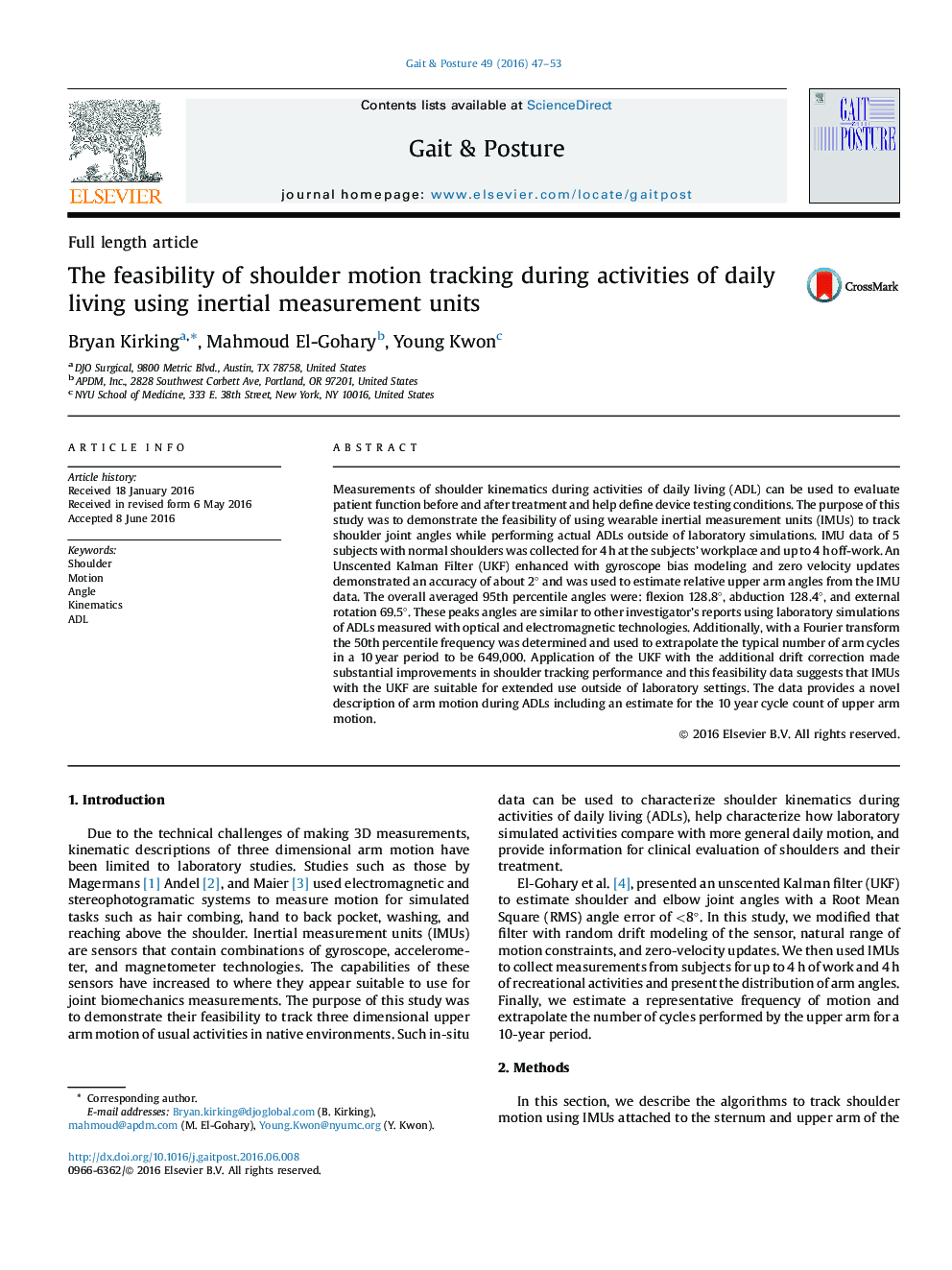| Article ID | Journal | Published Year | Pages | File Type |
|---|---|---|---|---|
| 6205391 | Gait & Posture | 2016 | 7 Pages |
â¢An improved tracking algorithm using an Unscented Kalman Filter was demonstrated.â¢Histograms of upper arm angles during Activities of Daily Living collected in-situ.â¢Estimated the cycle count representing 10 years of upper arm motion.
Measurements of shoulder kinematics during activities of daily living (ADL) can be used to evaluate patient function before and after treatment and help define device testing conditions. The purpose of this study was to demonstrate the feasibility of using wearable inertial measurement units (IMUs) to track shoulder joint angles while performing actual ADLs outside of laboratory simulations. IMU data of 5 subjects with normal shoulders was collected for 4 h at the subjects' workplace and up to 4 h off-work. An Unscented Kalman Filter (UKF) enhanced with gyroscope bias modeling and zero velocity updates demonstrated an accuracy of about 2° and was used to estimate relative upper arm angles from the IMU data. The overall averaged 95th percentile angles were: flexion 128.8°, abduction 128.4°, and external rotation 69.5°. These peaks angles are similar to other investigator's reports using laboratory simulations of ADLs measured with optical and electromagnetic technologies. Additionally, with a Fourier transform the 50th percentile frequency was determined and used to extrapolate the typical number of arm cycles in a 10 year period to be 649,000. Application of the UKF with the additional drift correction made substantial improvements in shoulder tracking performance and this feasibility data suggests that IMUs with the UKF are suitable for extended use outside of laboratory settings. The data provides a novel description of arm motion during ADLs including an estimate for the 10 year cycle count of upper arm motion.
